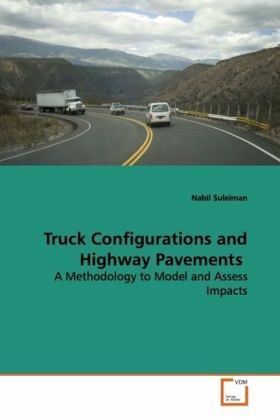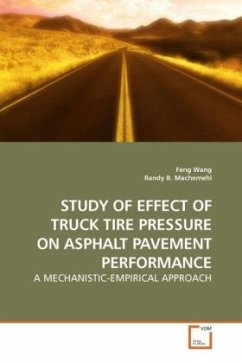
Truck Configurations and Highway Pavements
A Methodology to Model and Assess Impacts
Versandkostenfrei!
Versandfertig in 6-10 Tagen
39,99 €
inkl. MwSt.

PAYBACK Punkte
20 °P sammeln!
Today s truck configurations, weights, dimensions, axle types, axle loads, tire types, and tire pressures are very different from those used in earlier studies. Thus, their impacts on pavements must be studied and re-examined. Also the traditional use of load equivalencies in determining the impacts of these trucks is questionable. The problem being researched in this book pertains to developing an improved understanding of heavy vehicles, environment, and highway pavement interactions, and using that understanding to assess impacts of alternative truck configurations and develop LEFs. A 3D fi...
Today s truck configurations, weights, dimensions,
axle types, axle loads, tire types, and tire
pressures are very different from those used in
earlier studies. Thus, their impacts on pavements
must be studied and re-examined. Also the
traditional use of load equivalencies in determining
the impacts of these trucks is questionable. The
problem being researched in this book pertains to
developing an improved understanding of heavy
vehicles, environment, and highway pavement
interactions, and using that understanding to assess
impacts of alternative truck configurations and
develop LEFs. A 3D finite element program is used to
model moving truck loadings on highway pavement
systems under various environmental conditions. The
pavement responses are used to develop LEFs as well
as performance curves. The load equivalencies and
performance curves are then used to assess the
damage characteristics of different pavement systems
under numerous traffic loadings and environmental
conditions. The methodology and results discussed in
this book will be helpful to the highway pavement
community: researchers, practitioners, and policy
makers.
axle types, axle loads, tire types, and tire
pressures are very different from those used in
earlier studies. Thus, their impacts on pavements
must be studied and re-examined. Also the
traditional use of load equivalencies in determining
the impacts of these trucks is questionable. The
problem being researched in this book pertains to
developing an improved understanding of heavy
vehicles, environment, and highway pavement
interactions, and using that understanding to assess
impacts of alternative truck configurations and
develop LEFs. A 3D finite element program is used to
model moving truck loadings on highway pavement
systems under various environmental conditions. The
pavement responses are used to develop LEFs as well
as performance curves. The load equivalencies and
performance curves are then used to assess the
damage characteristics of different pavement systems
under numerous traffic loadings and environmental
conditions. The methodology and results discussed in
this book will be helpful to the highway pavement
community: researchers, practitioners, and policy
makers.












